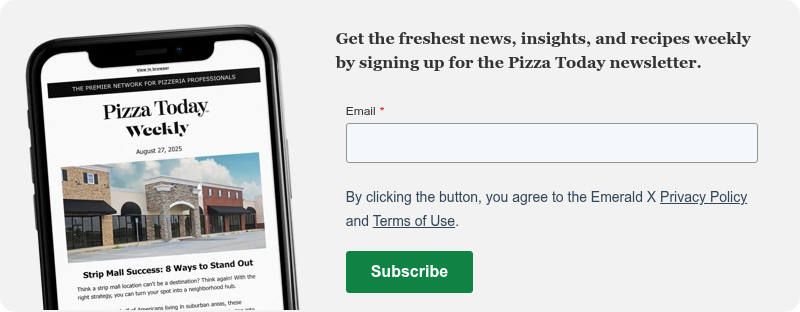Dialing in temperatures for beer, wine, cocktails and non-alcoholic drinks improves the dining experience
Flat soda. Warm wine. These details might not ruin a meal, but they certainly don’t make a good impression. When it comes to proper serving temperatures for beverages, getting it just right can be the difference between a forgettable dining experience and creating a repeat customer.
Mcson Salicetti is director of the New York chapter of the U.S. Bartenders Guild as well as beverage program developer at his New York City-based consultancy, Bar Libations & Co. After being raised by a mother who was a chef, Salicetti says he appreciates how drinks served at the appropriate temperatures can highlight the flavors in food and elevate the overall experience.
“When I have to set up a new program, these things become very important: teaching bartenders and managers saves money. It also brings customers back because it makes the flavors of the food you’re serving more exciting and more precise.”
Non-Alcoholic Sparkling Beverages
Restaurant owners might think soda is the easiest beverage offering. After all, a fountain soda that costs the restaurant pennies in carbonation and syrup can easily be sold for $3. But did you know that storage temperatures don’t just impact beer and wine but soda as well?
Freezing a can of soda – even temporarily – can result in a total loss of carbonation, even if it is opened months later. Similarly, storing soda in a hot kitchen or in the outdoor sun can drain the beverage of its fizzy goodness.
Instead, it is best to store soda at the same temperature it is manufactured at, 39-42 F, to maintain carbonation and pressure levels. See “Safe Beverage Storage and Handling” for details about food safety regulations that apply to storing canned sodas and other drinks.
Beer |
Wine |
||
| Pilsner/pale lager | 38°-45° F | Sparkling wine | 43°-50° F |
| Wheat beer, Kolsch | 43°-46° F | Sweet/dessert white wines | 43°-46° F |
| Dark lager | 41°-48° F | Light/medium-bodied whites | 45°-50° F |
| American pale ale/India pale ale (IPA) | 45°-50° F | Medium/full-bodied whites | 50°-55° F |
| Amber/red ale | 50°-57° F | Rosé | 46°-53° F |
| Sour | 45°-50° F | Light-bodied reds | 55°-59° F |
| Brown ale | 52°-55° F | Medium/full-bodied reds | 59°-64° F |
| Porter/stout | 50°-57° F | Fortified wine (Port, Sherry) | 55°-56° F |
Beers: from Pilsners to Stouts

(Photo by Room 76 Photography/stock.adobe.com)
When it comes to beer storage, lighter beers are best served cold. But before applying a blanket approach to storing and serving all beers just above freezing, Salicetti advises pizzeria operators to consider pairing aromatic beers with wide-mouth glasses so patrons can experience the subtle changes as they warm up and release different aromas.
“For a Pilsner, which is a lighter beer, you want it as cold as you can, but no colder than 38 F. Anything (lower than 35 F) will start compromising the carbonation, and we want to keep it crisp and refreshing,” Salicetti says.
Blondes, lagers, pale ales and IPAs, meanwhile, have higher hops content, which increases aromatics and tropical flavors. Salicetti says hops tend to release their oils at warmer temperatures, although he recommends against serving mid-bodied beers any warmer than 50 F.
Similarly, serving a heavier beer too cold deprives the drinker of the full experience. “If it’s too cold, then that’s a problem, because then all those flavors are muted and you don’t get anything,” Salicetti says. For heavier beers such as a stout or a porter, he advises servers to wait a few minutes before delivering the glass to the table. “If you wanted a perfect beer, give me three to five minutes, and then it’s gonna be wow, beautiful.”
Wines: from Sauvignon Blanc to Zinfandel
U.S. bars and restaurants often store bottles of red wine on the counter, meaning they reach room temperature, which enhances the hot burn of alcohol on the palate and makes wine taste sour. “Depending on how warm it is, you taste even more alcohol fumes,” Salicetti says. “You can go all the way up to 65 F (for a Cabernet or Merlot), and it will be perfect. But once again, that’s not room temperature; it’s almost 10 degrees lower than room temperature.”
Generally, white wines should be served between 45 and 55 F, while reds are best enjoyed between 55 and 65 F. Consider organizing your wine-storage system so the most light-bodied wines, such as Pinot Grigio and Sauvignon Blanc, get the coldest, while fuller bodied reds such as Cabernet Sauvignon and Zinfandel are farthest from the cooling unit. If the storage area seems too cold, remember that wine starts acclimating to the ambient temperature as soon as it leaves the bottle. Larger glasses with more surface area also will cause the beverage temperature to change more quickly. And as the customer enjoys their drink, the wine will continue to warm up and express more complex aromatic notes.
To keep customers coming back, Salicetti recommends pizzerias become more particular about beverage temperatures, noting that this small detail impacts the flavor of everything that comes out of the kitchen.
Kate Lavin is Senior Editor at Pizza Today.



